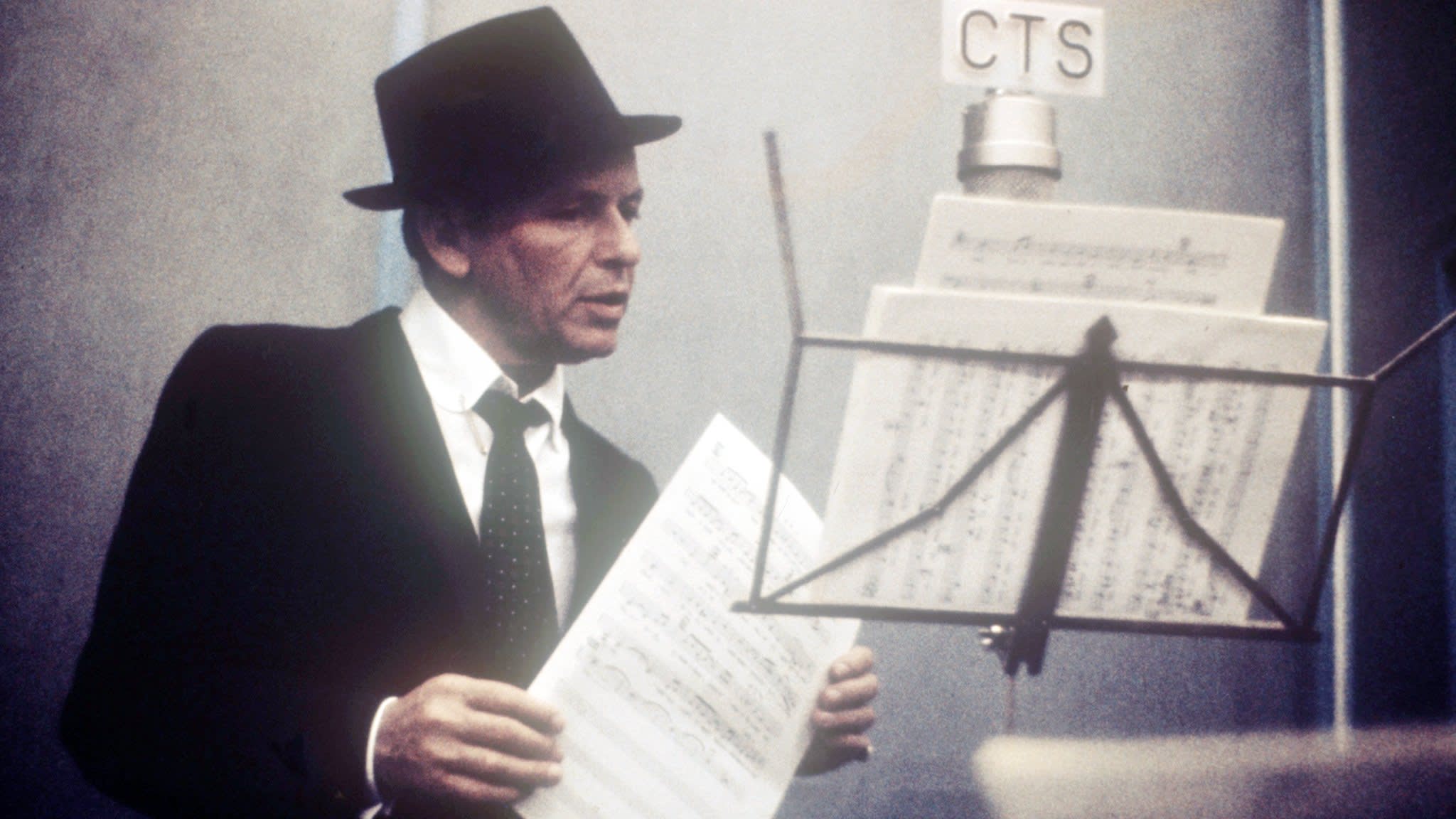Here’s a question for you. In which musical did “I’ve Got You Under My Skin” first appear, and by whom was it sung? Award yourself 10 points and a pat on the back if you answered Born to Dance(“M-G-M’s dazzling successor to ‘Great Ziegfeld’!”) and Virginia Bruce (who serenaded a startlingly young James Stewart).
As soon as Born to Dance was released, other musicians recognised the brilliance of the composition: of Cole Porter’s swooping, lovesick melody, his elegant, wry lyrics. Lee Wiley sounded even more heartbroken than Bruce; Al Bowlly— in some respects a precursor to Sinatra, in that he introduced the idea of the singer as the star, rather than the bandleader — fronted a busily and bizarrely Latin version for the Ray Noble orchestra. There were other recordings in those first months after the film, from Carroll Gibbonsand others, but it was another 20 years before the song took on the identity it has held ever since.
Frank Sinatra’s career revival was well underway by the time he entered Capitol Studios in Los Angeles in early 1956 to record Songs for Swingin’ Lovers!. His three albums since signing to Capitol had all been top-five hits, but Songs for Swingin’ Lovers!, his fourth, was something else: a record that defined, variously, an artist, an aesthetic, a lifestyle and an era. To this day, when some young male singer wants to capture the essence of ’50s showbiz glamour, it is to Songs for Swingin’ Lovers! they turn.
The album’s centrepiece was “I’ve Got You Under My Skin”, carefully sequenced to stand out between the more easygoing “Love Is Here to Stay” and “I Thought About You”. The intro is almost tinkling, a light shuffle, Sinatra sounding at his most relaxed. Then, at 2’15”, the song is transformed: the orchestra has been vamping up and Milt Bernhart’s trombone solo — written hurriedly, but delivered perfectly — unleashes a frenzy. Suddenly, the song is about not pent-up desire but unleashed desire. When Sinatra returns he’s no longer gentle, he’s insistent. The recording is a triumph, for Sinatra, Bernhart and for arranger Nelson Riddle and producer Voyle Gilmore.
Sinatra’s version is so definitive that it overshadows all other big-band arrangements. Ella Fitzgerald’s version, from the same year, sounds like a tea party in comparison. The recent trend for “American songbook” albums by pop artists has done neither the artists nor the song any favours: Rod Stewart’s version, with synths over a string section, is horrible.
Peter Andre’s is a direct copy of the Sinatra arrangement in the same way someone making an Airfix model is directly copying a Spitfire. Carly Simon’s is pleasant, but pointless. Cliff Richard, as ever, sounds like a man reading aloud about love from a Haynes car maintenance manual.
Best are the instrumental recordings (Oscar Peterson, Charlie Parker), and those where the artist has taken the song somewhere else entirely. In 1966, Bob Gaudio of The Four Seasons — the Brian Wilson of New Jersey — turned the song into a strangely compelling Beach Boys-styled number for Frankie Valli to sing, and took it into the US top 10. A decade on, Gloria Gaynor turned it into a dancefloor banger, perhaps truer to the original spirit of the song than any of the other versions, in that — as with so many Cole Porter songs — the glamour and lights of the disco could not conceal the emptiness and lovelessness of the song’s narrator.
“I’ve Got You Under My Skin” will likely never die. Other songs, just as good, just as popular at the time, have already faded. That’s proof not just that a song is dependent on its singer, but that only when that singer comes to encapsulate something greater does the song itself achieve transcendence. Cole Porter may have written “I’ve Got You Under My Skin”, but Frank Sinatra made it.
We are keen to hear from our readers. Whose version of ‘I’ve Got You Under My Skin’ is your favourite? Let us know in the comments below.
‘The Life of a Song: The fascinating stories behind 50 of the world’s best-loved songs’, edited by David Cheal and Jan Dalley, is published by Brewer’s.
Music credits: Jube Pops, AP Music, Nuova Canaria, The 3 in 1 Package Records, Decca (UMO), J Records, East West Records, 100 Hits, Parlophone UK, Parlophone UK, Decca (UMO), Sandmann & Walther, Rhino, Universal Music Group International
Picture credit: Dezo Hoffmann/REX/Shutterstock
